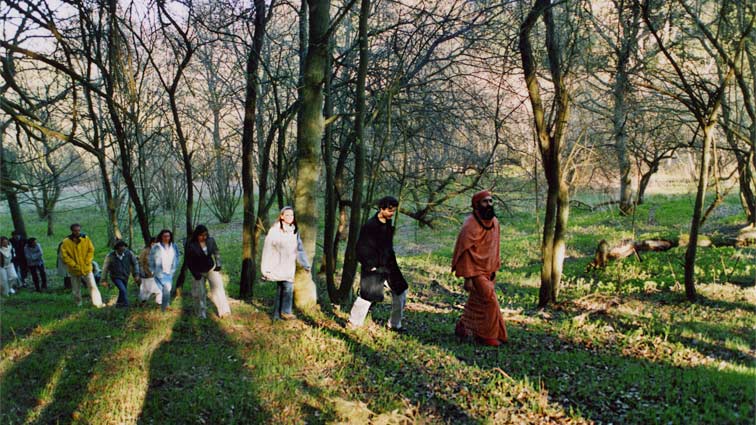Our Mountain Path curriculum (gurukulam) is known by the Sanskrit name Hansapathin. This curriculum is placed fifth among the seven levels of the Teachings. The curriculum introduces the tradition of the esoteric Mountain Path of the ancient siddhas, yogis, mystics and monks of Himalaya, who have been carrying out the sutra meditation and higher yoga through their silent retreats in caves and remote mountainous sanctuaries. Esoteric teaching texts and scrolls are interpreted and taught as living wisdom for a modern seeker, and a physically fit aspirant may have the opportunity to embark on a special journey to explore Himalaya. Those who are not able to visit mountainous terrain are urged to practice mindful walks and contemplative reflection in serene nature close to them and then apply relevant tenets in their immediate surroundings. The personal inquiry takes on a deeper meaning in an ambience bereft of worldliness and its distractions.

Wisdom of the mountains
Hansapathin teachings also develop an understanding of how the three levels of Himalayan terrain have impacted the root tradition: the Shivalik range up to about 9,000 feet, middle Himalaya up to about 18,000 feet which includes many high-altitude pilgrimage centres, and the high Himalaya that has the highest snow-capped peaks including Mount Everest (originally named vyomakuta in Sanskrit). The nath adepts do penance at various altitudes in remote terrain.
Trekking combined with mindful walking adds another dimension of self-discovery for an aspiring meditator. Interested aspirants are able to trek to parts of Uttarakhand and Himachal, and get an opportunity to experience first-hand the mystical ambience of the Himalayan Mountains. They are assisted with their pilgrimage through organized tours, generally with Haridwar as the starting point of the journey. As the name implies, Haridwar is the doorway to God and is a holy pilgrimage centre in India. The idea is to integrate mindful walking, balancing and trekking as part of the meditative ethos. A pilgrim is able to grow into an experience of habituated engrossment (samāpatti) while walking with tenderness along the trails in the footsteps of the great Himalayan masters and adepts. Peace walks amidst breathtaking scenery are often complemented with climbing steep ascents without becoming absent-minded. Such a contemplative walk aids mindfulness.

Himalaya has great tracts of wilderness and the environment in many parts is pristine, still free from encroachment. The vastness of the surrounding vistas, the sparkling water in springs and streams, stunning mountain views and rugged terrain help train the mind to be imbued with tranquility. The experience of caves as meditation coves in a rarefied atmosphere brings about thoughtlessness and freedom from internal chatter. Moreover, the exposure to a new ecosystem with many unusual species out of harm’s way nurtures our resolve to live in harmony with other creatures.
The teachings develop an understanding of how snowflakes bearing pure wisdom descend on the mountain tops; and the snow drifts and becomes frozen into ice to store the wisdom as glaciers. Their meltwaters then carry rivulets of knowing to the plains, and thereafter the rivers quench the thirst in the parched plains before merging into the sea. For some, this is more than a metaphor. Our meditation lineages treat the Himalayan Mountains as hallowed high ground close to the celestial source of sacred knowledge. They carried on the tradition which is known as the Mountain Path in Himalaya. The sacred traditions have been thriving since the descent of the rivers Saraswati and Ganga, and are hailed as a repository of indigenous knowledge. Thus the major mountains spanning the entire headwaters of Saraswati and Ganga are adored as the natural heads of different lineages. Each major mountain has its own particular character and has inspired a style of practice or branch within an overall system of meditation hitherto preserved in Himalaya.

